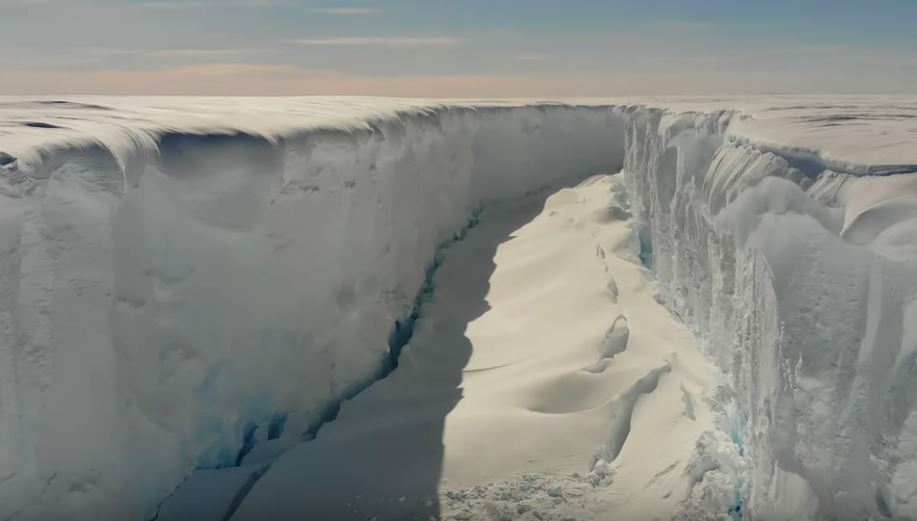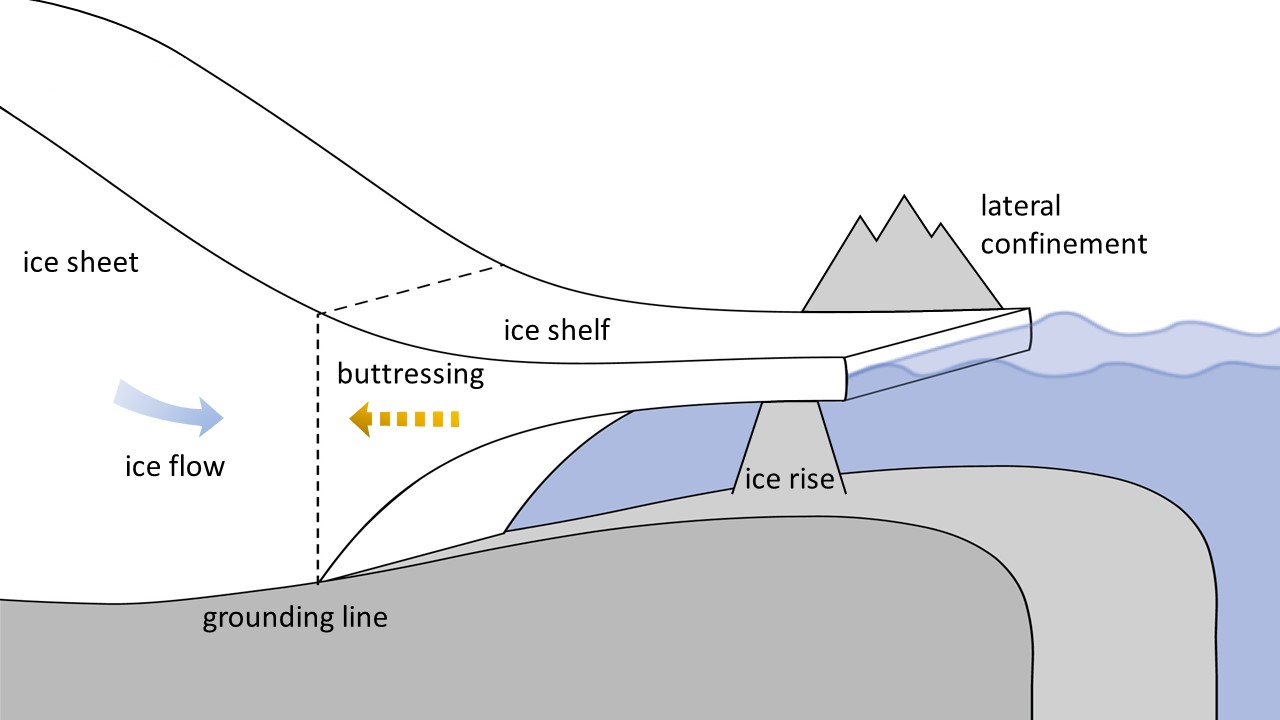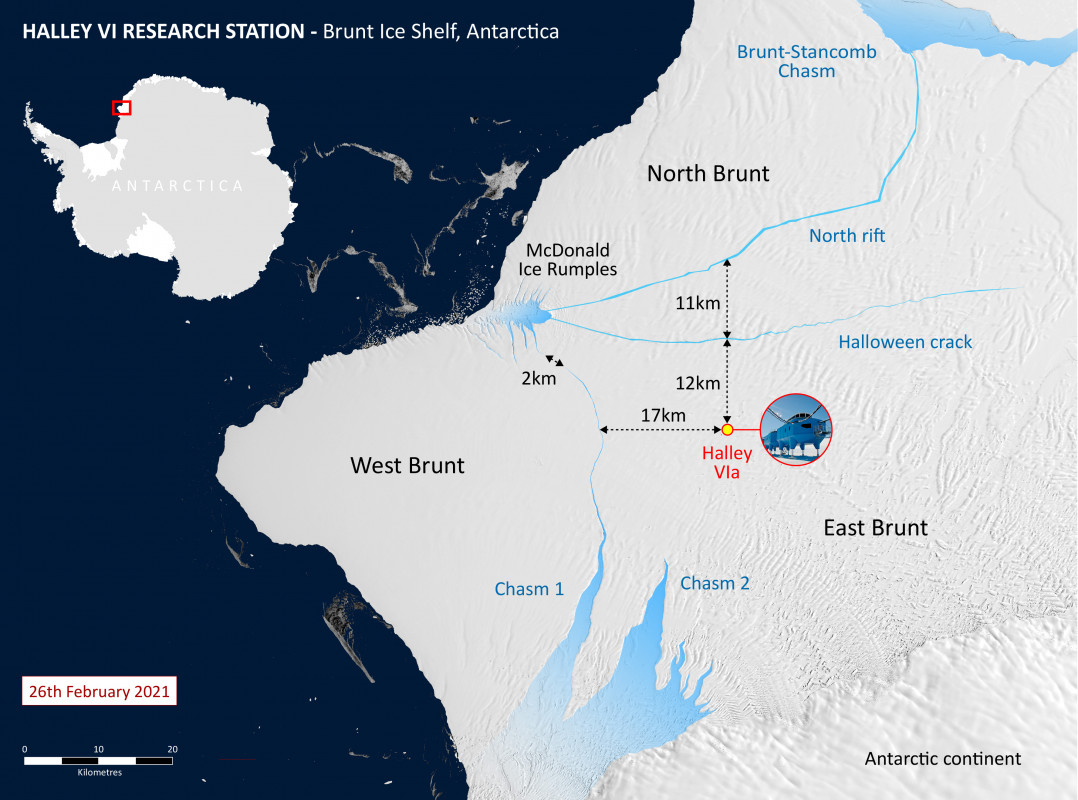 On February 26, a giant 1,290 square kilometer iceberg broke away from Antarctica’s 150 meter-thick Brunt Ice Shelf.
On February 26, a giant 1,290 square kilometer iceberg broke away from Antarctica’s 150 meter-thick Brunt Ice Shelf.
The chunk of ice drifted into the Weddell Sea on the continent’s northwest coast.
Thankfully, scientists from the British Antarctic Survey (BAS) were expecting this split to happen, so no one was hurt.
The idea of such a large iceberg breaking off may sound intimidating, so let’s look at the process of calving and why it happens.
What Causes Calving?
 Calving is the process of ice chunks breaking off from the end of a glacier. Usually small, fast-flowing glaciers have small chunks that break off regularly. In the case of large ice shelves, such as those of Antarctica, bigger sections splinter off.
Calving is the process of ice chunks breaking off from the end of a glacier. Usually small, fast-flowing glaciers have small chunks that break off regularly. In the case of large ice shelves, such as those of Antarctica, bigger sections splinter off.
So, what is the difference between a glacier and an ice shelf? A glacier (or an ice sheet) is a mass of ice that is connected to the land. Ice shelves are floating tongues of ice that jut out from the glaciers.
The point at which ice shelves are connected to the land underneath the glacier is known as the grounding line. Sometimes, little rocky protrusions on the ground, known as pinning points, can lock the floating ice shelf -- think of it like a brake that slows down the flow of the ice shelf.
Calving begins when cracks form in ice shelves due to strong winds, water erosion from beneath the ice shelf, or melting ice. Over time, the cracks deepen and widen, eventually leading to calving. The chunk of ice hits the water, becoming a new iceberg.
The new iceberg broke off from a point of the Brunt Ice Shelf called the “North Rift” crack. The North Rift is the third major chasm on the glacier in the last decade. The BAS scientists anticipated calving would occur as they could visually see the outline of the iceberg that would fall on Friday morning.
Is Climate Change Responsible?
 The process of calving itself is not unusual. Ice calving helps to balance the glacier’s extra accumulation of mass from snowfall and ice.
The process of calving itself is not unusual. Ice calving helps to balance the glacier’s extra accumulation of mass from snowfall and ice.
That said, rising global temperatures weaken polar ice, causing larger and more frequent calving. Not only do these destroy polar habitats, but as more and more ice chunks break off and melt into the ocean, global sea levels rise. These harmful effects of climate change are a growing cause of concern for climate scientists.
But in the case of the Brunt Ice Shelf region, scientists have little reason to worry. The region has not experienced significant climate changes that would alter the calving process. So a large calving event with an iceberg twenty times the size of Manhattan is a rare and exciting event.
The research station on the Brunt Ice Shelf is closed due to the unpredictability of ice calving in the winter. However, the BAS continues to monitor the ice shelf with the help of GPS and satellite images. Their goal is to analyze the shelf’s movement, deformation, and impact of recent calving.
Sources: NSIDC, BBC, Antarcticglaciers.org, LiveScience










